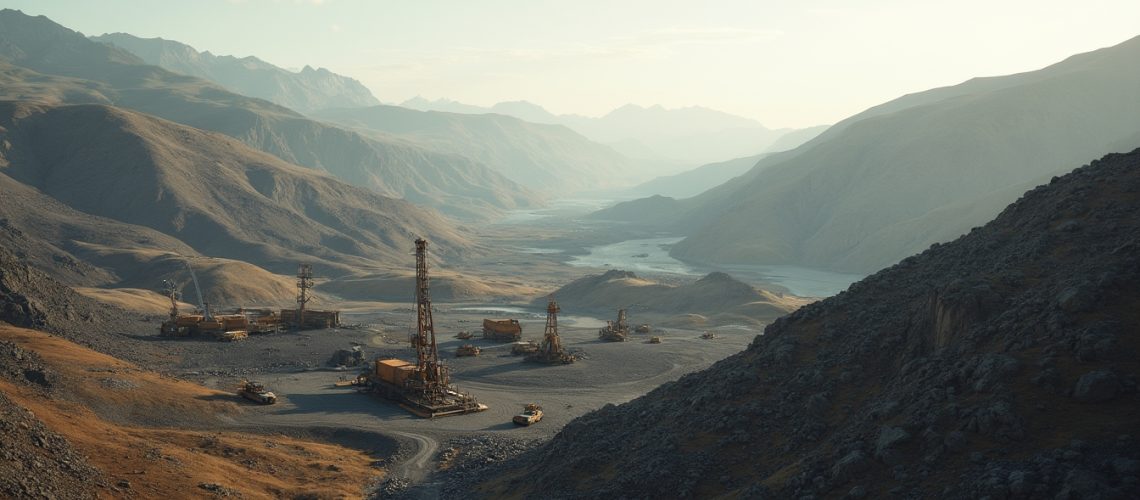Introduction
The Alberta government's recent decision to lift the coal exploration moratorium marks a pivotal shift in the province's approach to natural resource development. Rooted in a complex historical and economic context, this move has ignited intense debates among environmentalists, industry leaders, and legal experts. Balancing economic growth with environmental preservation remains a delicate task, and Alberta's new policy has significant implications for all stakeholders involved.
What Prompted the Reversal of the Coal Exploration Moratorium?
Historical Context of Coal Policy
Established in 1976, Alberta's coal policy was designed to protect sensitive ecological regions, including parks and wildlife sanctuaries. For nearly five decades, this policy acted as a cornerstone for environmental conservation, restricting coal exploration and mining activities in vulnerable areas. It was a critical tool for balancing the province's economic ambitions with the need to safeguard natural landscapes.
Key Policy Transformations
Energy Minister Brian Jean's recent announcement aims to modernise the regulatory framework governing coal exploration. The new policy seeks to reduce confusion and streamline the application process for coal exploration permits. A significant change is the outright ban on open-pit mining, a practice that has been a focal point of environmental concerns due to its substantial ecological footprint.
This new approach reflects a balance of environment and economy, aiming to address ecological concerns while revitalising the coal industry.
Legal and Financial Implications
Ongoing Legal Challenges
The policy reversal has significant legal ramifications. Five coal companies are suing Alberta for a staggering $15 billion (C$21.57 billion) in lost revenues and sunk costs. According to University of Calgary professor emeritus Nigel Bankes, lifting the moratorium could potentially weaken the legal basis of these lawsuits, as the companies may no longer be able to claim that they were unfairly restricted from pursuing their economic interests.
Economic Considerations
With over 1,880 km² of potential exploration leases becoming available, the economic opportunities are substantial. However, tapping into these resources is fraught with environmental and regulatory complexities. The vast area opens doors for investment and job creation but also raises questions about sustainable practices and long-term ecological impacts.
The global energy market is also experiencing challenges, including a logistics logjam that affects coal supply chains. Alberta's coal industry must navigate these international dynamics to capitalise on new opportunities.
Environmental Concerns and Stakeholder Perspectives
Selenium Contamination Risks
A primary environmental concern is the risk of selenium contamination in watersheds. Selenium, while a necessary micronutrient, can be toxic in large amounts and poses a significant threat to aquatic life and water quality. The Canadian Parks and Wilderness Society has underscored the importance of stringent measures to prevent selenium leaching into Alberta's critical water resources.
Stakeholder Critiques
Environmental organisations, such as the Alberta Wilderness Association, have been vocal in their criticism. Kennedy Halvorson expressed deep concerns that companies might resume exploration applications before comprehensive policy frameworks are fully established. "Allowing exploration to proceed without robust safeguards jeopardises our protected lands and waters," Halvorson noted, emphasising the need for caution and thorough planning.
How Does the New Regulatory Framework Shape Future Coal Exploration?
New Rules and Restrictions
The revised policy introduces several significant changes:
- Ban on Open-Pit Mining: This addresses one of the most environmentally damaging mining practices, aiming to protect landscapes and ecosystems.
- Structured Exploration Permit Applications: Companies must navigate a more rigorous application process, ensuring that only projects meeting strict criteria proceed.
- Enhanced Environmental Protection Mechanisms: Increased monitoring and regulation intend to mitigate ecological impacts.
Comparative Policy Analysis
The shift from a nearly five-decade-old policy represents a substantial transformation in Alberta's approach. The new regulations attempt to strike a balance between economic development and environmental preservation, reflecting a global trend towards more sustainable resource extraction practices.
Future Outlook for Alberta's Coal Industry
Potential Industry Impacts
The coal industry faces a complex landscape:
- Uncertainty Around Permits: Navigating the new regulatory environment will require companies to adapt quickly.
- Legal Challenges: Ongoing lawsuits may create a hesitant investment climate.
- Environmental Monitoring Requirements: Stringent standards will necessitate advanced technologies and practices.
Investment Landscape Considerations
Regulatory uncertainty and environmental concerns may impact investor confidence. However, global economic factors, such as China's economic stimulus boosting resource demand, could influence the coal market positively. Companies must demonstrate a commitment to sustainability and compliance to attract investment. The evolving policy framework requires strategic planning and adaptability.
Recommendations for Sustainable Coal Development
Best Practices for Environmental Protection
For successful and responsible coal development, the following practices are essential:
- Robust Stakeholder Engagement: Involving communities, Indigenous groups, and environmental organisations in decision-making.
- Comprehensive Environmental Impact Assessments: Thorough evaluations to understand potential ecological effects.
- Transparent Policy Implementation: Clear guidelines and open communication with the public.
- Continuous Environmental Monitoring: Ongoing assessment to mitigate unforeseen impacts.
Leveraging Innovative Technologies
Adopting new technologies can help minimise environmental footprints. For instance, exploring innovative decarbonisation strategies can reduce emissions associated with coal mining, aligning with global efforts to combat climate change. Additionally, tailings reprocessing offers opportunities to unlock economic value while addressing environmental concerns.
Conclusion
Alberta's decision to lift the coal exploration moratorium is a significant policy shift with far-reaching implications. Balancing economic opportunities with environmental stewardship requires careful planning, transparent policies, and collaborative efforts among all stakeholders. As the province navigates this complex terrain, the focus must remain on sustainable development practices that ensure the preservation of Alberta's rich natural heritage for future generations.
Want to Stay Ahead of Emerging Mineral Investment Opportunities?
Discover actionable insights with Discovery Alert's AI-powered notifications, which scan ASX announcements in real-time and help investors—from beginners to experts—navigate complex mineral exploration opportunities. Start a 30-day free trial today and transform how you approach resource sector investments.







